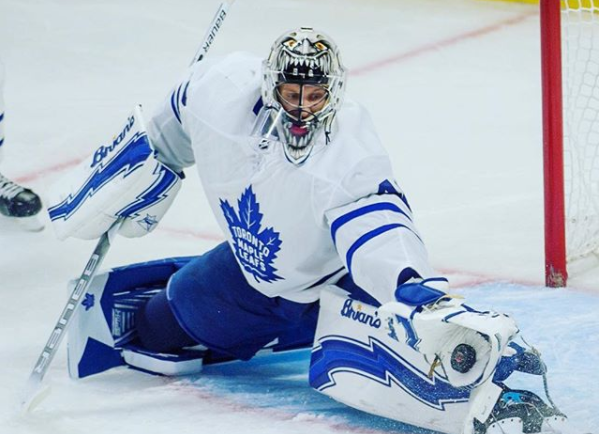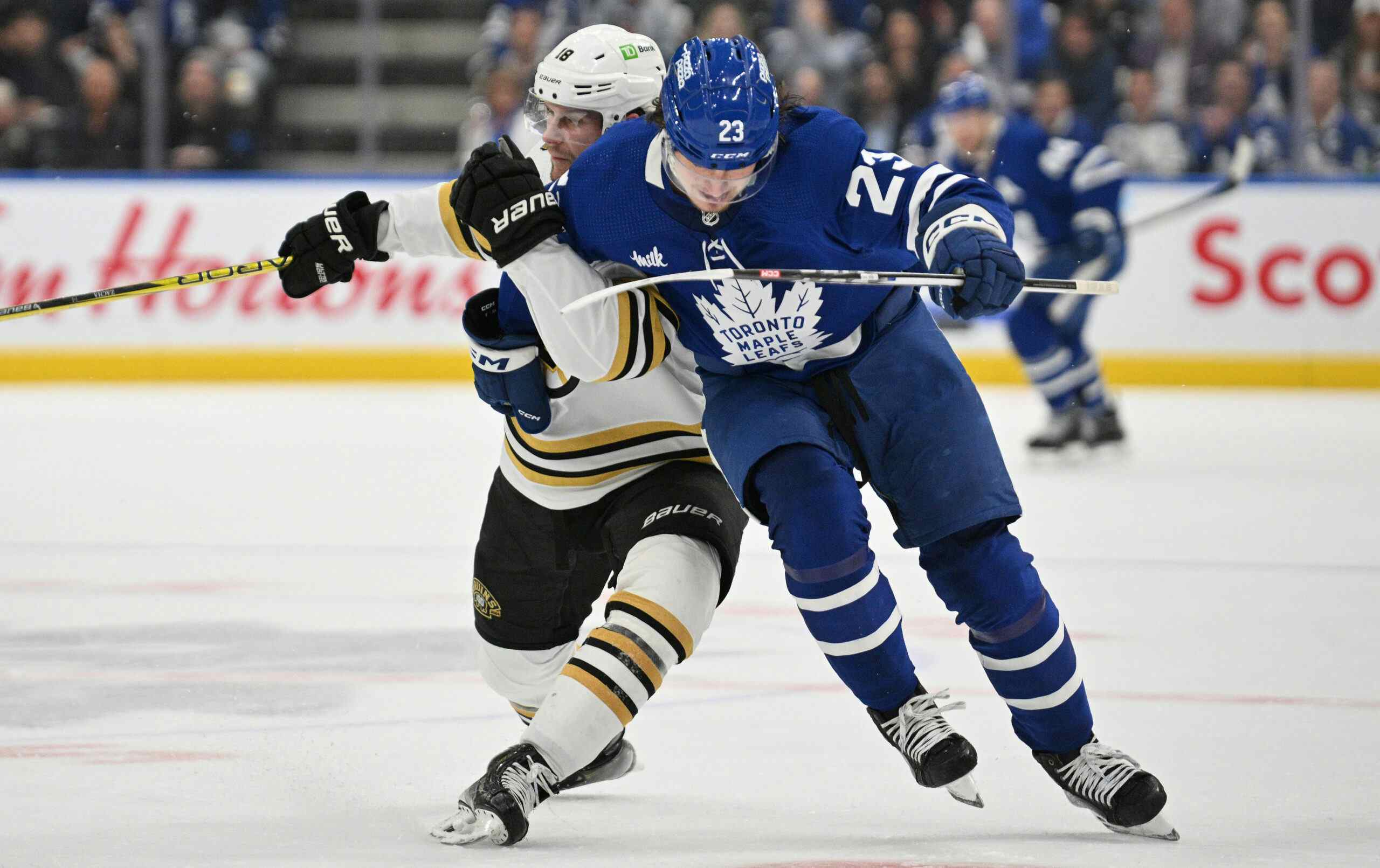The Monday Marlie: Elite goaltending propelling Marlies to first-place

Through 44 games this season, and with Garret Sparks and Calvin Pickard at the helm, the Toronto Marlies have only been scored on 85 times.
Meaning the Marlies have allowed, on average, less than two goals against per game (1.93).
“Obviously we’re playing good in front of [our goalies]–any time you’re getting shutouts, it’s hard to lose,” said Marlies forward Jeremy Bracco.

To give you some perspective on how good the Marlies goaltending has been, take this into account:
Garret Sparks’ GAA, 1.60, places him first amongst all AHL goaltenders. Trailing Sparks’ in the GAA leaderboard is his goalie partner, Calvin Pickard, 1.94 GAA, who is second amongst all AHL goaltenders.
Now, If Sparks and Pickard do indeed finish first and second in GAA by the end of the year, it’ll be the first time a goalie tandem has finished atop the league in GAA since the league started calculating the stat in 2005-2006. But lets say that both Sparks and Pickard don’t finish in the top-two, but they each finish in the top-five, they’d be the first pairing to do since 2009-2010, when both of the Hamilton Bulldogs goaltenders, Cedrick Desjardins and Curtis Sanford, finished top-five in GAA.

The stability that the Marlies goaltending has provided has been, unquestionably, the x-factor to their first-place campaign. And hey, it’s a credit to the Leafs organization for stocking their minor affiliate’s cupboards with such fine goaltending.
How do the Marlies have the league’s best PK?
As of now, the Marlies 89.3% succession rate on the PK is good enough for top-spot in the league. What’s even more impressive is how their penalty kill has performed in January alone, as the team has killed off 94% of their minor penalties this month.
So, what’s making the Marlies PK click?
It’s twofold.
“I think goaltending–is where it starts [in regards to penalty kill success],” said Marlies head coach Sheldon Keefe. “[But also] the guys that we put over the boards to kill penalties have been great for us all season and have really bought in—I think as a group they’ve rallied around each other and recognized how important penalty killing is and that they take a lot of pride in it.”
Obviously, good goaltending is going to attribute to penalty kill success, but Keefe’s second point here is something to note.
From the Leafs’ perspective, it’s important for these Marlies forwards understanding the importance of penalty killing because the grim reality for many of the Marlies/Leafs bubble players, particularly their forwards, is that they’ll have to be efficient penalty kill players to earn any type of look on the Leafs roster in the near future.
Andreas Johnsson is red-hot, when will the Leafs give him a chance?
Speaking of versatility, Marlies forward Andreas Johnsson earned some credit from his head coach for just that.
“He’s just been a great player for us and he’s produced at a little bit [of a] higher rate here for us this season,” said Keefe. “He just continues to be a very reliable and very responsible–no matter what line or what position or power play, penalty kill–wherever we [have] put him–he’s been excellent.”
A hat-trick against the Syracuse Crunch on Saturday capped off a January to remember for Johnsson. Not only did those three points mark his 10th in his previous 10 games, but the 23-year-old winger was named as Kasperi Kapanen’s replacement for this past weekends all-star game.
“I think he’s really just carried forward what he did for us last year,” said Keefe. “He was a big time player for us last season–he’s carried forward with that this year. Obviously he has a bit more experience and he knows what to expect and use that as confidence for himself.”
There is a very good chance Toronto doesn’t retain any of their pending UFA forwards (James van Riemsdyk, Tyler Bozak and Leo Komarov), and if that’s the case–Johnsson’s someone to keep an eye out on, as he could very well sneak into the Leafs opening lineup for next season.
Liljegren progressing well
In the short term, the Leafs need to upgrade their right-hand defence.
But in the long term, Timothy Liljegren could turn out to be that long-awaited top-four, if not top-two, right-hand defenceman.
“I think he’s been good, I think he’s been real good,” said Marlies head coach Sheldon Keefe when asked about Liljegren’s performance since returning from the World Junior tournament. “He’s a young guy and at times he shows it in different shifts here and there but he’s playing with a lot of confidence both offensively and defensively, and we’ve been really happy with that and he’s making real progress.”
And the areas in which Liljegren is progressing the most in are the areas in which the Leafs need some of the most help.
For example, Liljegren has a really good first-pass and his confidence with leading breakouts has continued to evolve throughout his first season playing in North America. His partnership with Martin Marincin has helped smooth his transition overseas, too.
“[Marincin] is a great guy off the ice–he [has] helped me a lot in the defensive zone [and] he talks with me on the bench too, it’s been great.”
The two balance out quite well and Marincin’s defensive strengths allow for Liljegren to jump up and get involved in the play, if need be.Through 21 games this season, the Leafs 2017 first round pick has 10 points to show for, pegging him 8th in rookie defenceman point-per-game scoring (0.48 p/pg).
Recent articles from Jacob Stoller





